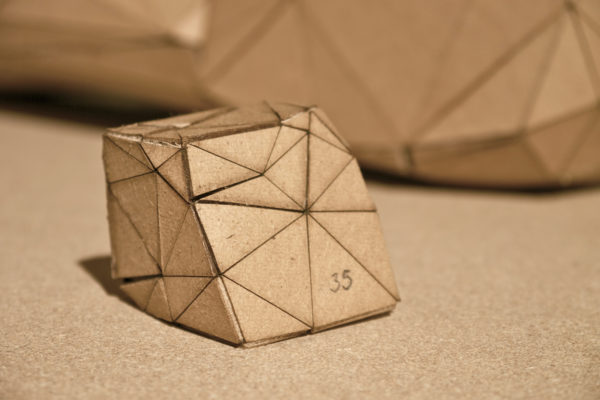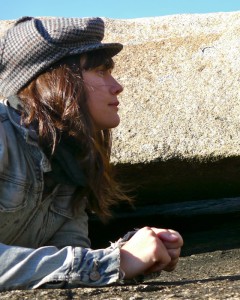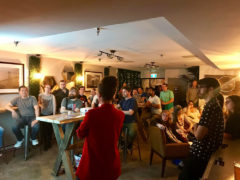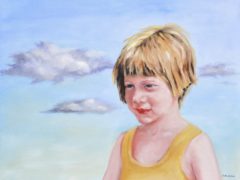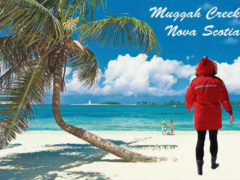January 2013 Featured Artist – Anne Macmillan
Anne Macmillan has lived in Halifax since earning a BFA in Intermedia from NSCAD University in 2009. She grew up in Wolfville, Nova Scotia with motorbikes, dairy farms and apple orchards. Anne has received grants from the Canada Council for the Arts and the Nova Scotia Department of Communities, Culture and Heritage. She has exhibited widely in the Atlantic region since 2007. Her large pencil-on-plywood drawing Heather’s Coast (2009) appeared in the national group drawing exhibition Somewhere Along the Line at Mount Saint Vincent University Art Gallery (MSVU), and was acquired for the MSVU permanent collection.
Mentorship
I had a rewarding experience participating in the 2011/2012 Mentorship program, which was my first involvement with VANS. I was fortunate to be paired with artist and curator Peter Dykhuis. During one meeting, I recall Peter describing his obsession with NASCAR, speaking of the variables of the race that fascinated him: the driver skill, car preparation, various track conditions and just plain luck that influence the cars looping around the track at high speeds. He brought this up by chance in casual conversation, but it was during a time I was considering asteroid orbits and collision paths in my artwork, and I loved the comparison. We both thoroughly enjoyed getting to know one another while he helped me prepare for an upcoming solo show. I am thankful to VANS for sparking what has become a lasting friendship.
Between Fact and Fiction
Most recently, I find inspiration in types of geological surfaces and edges. I think a lot about the act of deliberation, and there is something in the complex delineation of an edge that allows me to consider this further. I want my work to be partially rooted in reality, and to have an authenticity about it. I try to achieve this by structuring projects around empirical data or by following a set of rules in the process. I’m not simply attempting data visualization. Instead, I strive for the tension between fact and fiction embodied within the work. I am interested in analyzing my environment using scientific methods of inquiry, and looking at the results of technologies that bring hidden environments to our senses in the form of raw data. There is plenty of inspiration and examples where nature is distanced from us by space, scale, or time, causing a delay in our perception.
The Process
If I don’t have a deadline that is motivating me to produce work, it can be tricky to make “significant” progress. I may spend what could be considered too much time experimenting in the studio, without completing work. This experimentation time is vital, but ultimately I need some sort of structure like an exhibition to help push me through this stage.
Recently, I was invited to be part of the Prospect Series at Mount Saint Vincent University Art Gallery, which presents works by selected Nova Scotian artists in the early stages of their careers. My exhibition showed from October 20 to December 9, 2012. It was a huge honor and tremendous learning experience, and I owe much to those who helped me along the way: Ingrid Jenkner, Peter Dykhuis, Jan Peacock, Kathleen Tetlock, and many others, who provided such incredible support and helped me achieve my first Canada Council project grant. I owe much of my recent success to their generosity.
No End in Sight
Recent work has taken the form of drawings and sculptures. Usually working in a series of multiples, the body of work accumulates since the process is designed to have no determined end. For example, I am working on tracing the contours of all recorded asteroids, and am continuing to collect rocks and create boxes for them. This forces the work to be in a constant state of production. Working this way also sets an unrealistic, even impossible goal that has the atypical effect of motivating me to continue on.
The materials I use are humble in nature and accessible; this could be because the process is extraordinary enough to balance the attention granted to the object. I am attracted to repeating forms with muted, natural colours. I make use of various forms of technology in the process (3D scanners, 3D printers, plotter-cutters, laser-cutters and many forms of software), the output of which tends to involve fastidious hand-constructed forms.
Packaging
For Boxes for Rocks (2012), I collect and catalogue small rocks, scanning their surface in three dimensions. From the computed 3D model, I design boxes to fit over the surface as accurately as possible. From a single piece of cardboard, I laser-score and cut the hundreds of facets and hand-fold each box to enclose the rock within. Compared to a standard six-sided box, these boxes demonstrate a strange specificity to the contents within, yet at the same time speak of the simplification of the actual surface of the rock. I am attracted to this “grand futile attempt” in the process of quantifying natural objects – Rocks and coastlines contain infinite detail and are impossible to measure accurately using this Euclidean method. Inevitably the sculptures settle for being sincere, yet mere approximations.
Prospects
I am currently putting out several applications for shows, residencies and grad-school, so perhaps I will have some options to choose from when I hear back a few months from now. Currently, I have a lot of reading to do and will continue to build upon the two series’ of work that I have recently exhibited. I am also excited to work on a collaborative project with Jan Peacock in the near future.

